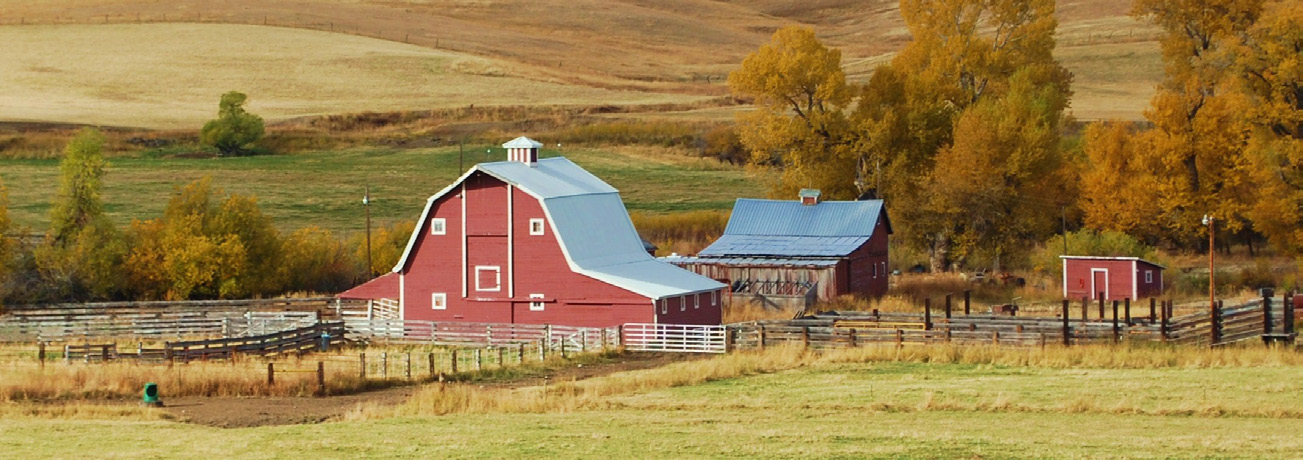Montana Property Taxes: Does my land qualify as agricultural land?
Montana property taxes provide important funding for schools, roads and bridges, fire protection, law enforcement, and other services. Most Montanans proudly accept the responsibility to pay their fair share of property taxes. However, as financial services company Morgan Stanley told its clients, “There’s no law that says you gotta leave a tip.”
Significant property tax benefits accrue to Montana landowners whose parcels qualify as agricultural lands, especially if a homesite exists on the parcel. Agricultural land is currently taxed at 2.16% of its agricultural productive value, while residential property is taxed at 1.35% of its market value. Non-qualified agricultural land is taxed at seven times the agricultural rate (i.e., 15.12%). Forest land is classified and valued separately from agricultural land.
Agricultural Land vs. Nonqualified Agricultural Land
The Montana Department of Revenue classifies agricultural land by its use, which includes irrigated and non-irrigated cropland, irrigated and non-irrigated hay land, irrigated and non-irrigated grazing land, and specialty cropland. Examples of specialty cropland include fruit tree orchards, vineyards, vegetable farms, and Christmas tree farms.
Agricultural land designation for property tax assessment requires that landowners earn at least $1,500 in gross income annually from agricultural products produced and marketed from the land. Allowable documentation of gross income from cropland or hay land includes sales receipts, cancelled checks, income tax statements, and other written evidence of sales transactions.
For grazing land, the $1,500 gross income requirement is satisfied when the land meets or exceeds a minimum livestock carrying capacity. As required by statute, every two years the MSU College of Agriculture calculates the minimum livestock carrying capacity that equates to $1,500 annual gross income. Carrying capacity is the number of livestock that can graze without harming the land. USDA Natural Resources Conservation Service soil surveys provide data for calculating livestock carrying capacity on both irrigated and non-irrigated grazing land parcels. Soil surveys are detailed land assessments which have soil maps and estimated forage yields for individual soil types. Each county’s soil survey encompasses the different soil types found within that county.
Land parcels of 160 acres or more automatically receive agricultural designation unless they are used for non-agricultural purposes (e.g., industrial, commercial, residential, etc.). Landowners whose properties are less than 160 acres must apply to the Montana Department of Revenue for their land to receive agricultural designation. When land parcels of more than 20 acres in size but less than 160 acres are not used for industrial or commercial purposes, and the land does not provide at least $1,500 annual gross agricultural income, these parcels are classified as nonqualified agricultural land. Nonqualified agricultural land is valued at the statewide average productivity of grazing land, and as described earlier, nonqualified agricultural land is taxed at seven times the agricultural rate. If a parcel of land less than 20 acres in size is not used for industrial or commercial purposes, and does not meet the agricultural income requirement, it is taxed at market value.

Photo: Lisa Terry, MSU Extension
Homesites
When a residential dwelling exists on either agricultural land or nonqualified agricultural land, one acre under the residence is designated as a homesite. Homesites on nonqualified agricultural land are taxed at market value of homes situated on 1-acre rural lots. In contrast, 1-acre homesites on agricultural land are taxed at the highest productivity value of agricultural land in the state. Therefore, there is a significant property tax benefit for homesites on agricultural land vs. homesites on nonqualified agricultural land.
Barns, sheds, corrals, silos, grain bins, and similar structures are considered agricultural improvements, not residential improvements. Land under agricultural improvements is classified as non-irrigated grazing land and valued according to its livestock carrying capacity. Land beneath water bodies, irrigation ditches, road easements, and powerline easements is similarly classified and valued as non-irrigated grazing land.
Looking Forward
The Montana Department of Revenue does not value agricultural lands based on market value. Rather, agricultural lands are valued based on their capacity to produce income from crops or livestock forage. The Montana Legislature crafted this approach to ensure that property taxes for genuine agricultural lands are buffered from inflated land values driven by exurban development and land speculation. Property owners may apply for agricultural classification of their land by sending an application to the Montana Department of Revenue. March 1 is the application deadline to be considered for the current tax year.
|
More detailed information about agricultural property classification is available in the Montana Agricultural Land Classification and Valuation Manual published by the Montana Department of Revenue mtrevenue.gov/dor-publications/property-reappraisal-plan-manuals/ The Agricultural Land Classification Application is available at mtrevenue.gov/publications/agricultural-land-classification-application-form-ab-3/ USDA Natural Resources Conservation Service soil survey data can be accessed at |
Jeff Mosley, PhD, is the MSU Extension Range Management Specialist.
